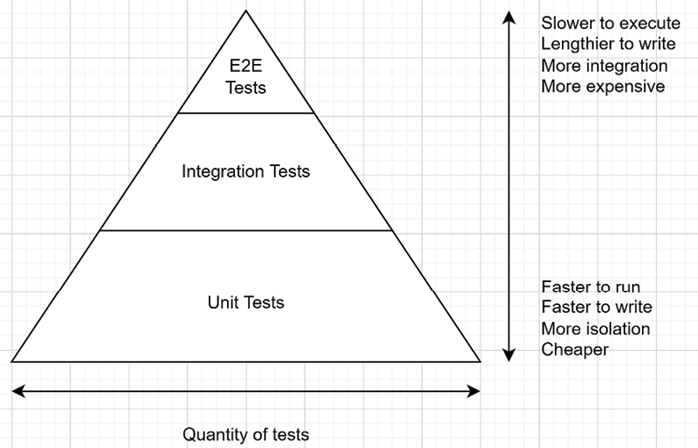Before you begin: Join our book community on Discord
Give your feedback straight to the author himself and chat to other early readers on our Discord server (find the “architecting-aspnet-core-apps-3e” channel under EARLY ACCESS SUBSCRIPTION).
https://packt.link/EarlyAccess
This chapter focuses on automated testing and how helpful it can be for crafting better software. It also covers a few different types of tests and the foundation of test-driven development (TDD). We also outline how testable ASP.NET Core is and how much easier it is to test ASP.NET Core applications than old ASP.NET MVC applications. This chapter overviews automated testing, its principles, xUnit, ways to sample test values, and more. While other books cover this topic more in-depth, this chapter covers the foundational aspects of automated testing. We are using parts of this throughout the book, and this chapter ensures you have a strong enough base to understand the samples.In this chapter, we cover the following topics:
- An overview of automated testing
- Testing .NET applications
- Important testing principles
Introduction to automated testing
Testing is an integral part of the development process, and automated testing becomes crucial in the long run. You can always run your ASP.NET Core website, open a browser, and click everywhere to test your features. That’s a legitimate approach, but it is harder to test individual rules or more complex algorithms that way. Another downside is the lack of automation; when you first start with a small app containing a few pages, endpoints, or features, it may be fast to perform those tests manually. However, as your app grows, it becomes more tedious, takes longer, and increases the likelihood of making a mistake. Of course, you will always need real users to test your applications, but you want those tests to focus on the UX, the content, or some experimental features you are building instead of bug reports that automated tests could have caught early on.There are multiple types of tests and techniques in the testing space. Here is a list of three broad categories that represent how we can divide automated testing from a code correctness standpoint:
- Unit tests
- Integration tests
- End-to-end (E2E) tests
Usually, you want a mix of those tests, so you have fast unit tests testing your algorithms, slower tests that ensure the integrations between components are correct, and slow E2E tests that ensure the correctness of the system as a whole.The test pyramid is a good way of explaining a few concepts around automated testing. You want different granularity of tests and a different number of tests depending on their complexity and speed of execution. The following test pyramid shows the three types of tests stated above. However, we could add other types of tests in there as well. Moreover, that’s just an abstract guideline to give you an idea. The most important aspect is the return on investment (ROI) and execution speed. If you can write one integration test that covers a large surface and is fast enough, this might be worth doing instead of multiple unit tests.

Figure 2.1: The test pyramid
I cannot stress this enough; the execution speed of your tests is essential to receive fast feedback and know immediately that you have broken something with your code changes. Layering different types of tests allows you to execute only the fastest subset often, the not-so-fast occasionally, and the very slow tests infrequently. If your test suite is fast-enough, you don’t even have to worry about it. However, if you have a lot of manual or E2E UI tests that take hours to run, that’s another story (that can cost a lot of money).
Finally, on top of running your tests using a test runner, like in Visual Studio, VS Code, or the CLI, a great way to ensure code quality and leverage your automated tests is to run them in a CI pipeline, validating code changes for issues.Tech-wise, back when .NET Core was in pre-release, I discovered that the .NET team was using xUnit to test their code and that it was the only testing framework available. xUnit has become my favorite testing framework since, and we use it throughout the book. Moreover, the ASP.NET Core team made our life easier by designing ASP.NET Core for testability; testing is easier than before.Why are we talking about tests in an architectural book? Because testability is a sign of a good design. It also allows us to use tests instead of words to prove some concepts. In many code samples, the test cases are the consumers, making the program lighter without building an entire user interface and focusing on the patterns we are exploring instead of getting our focus scattered over some boilerplate UI code.
To ensure we do not deviate from the matter at hand, we use automated testing moderately in the book, but I strongly recommend that you continue to study it, as it will help improve your code and design
Now that we have covered all that, let’s explore those three types of tests, starting with unit testing.